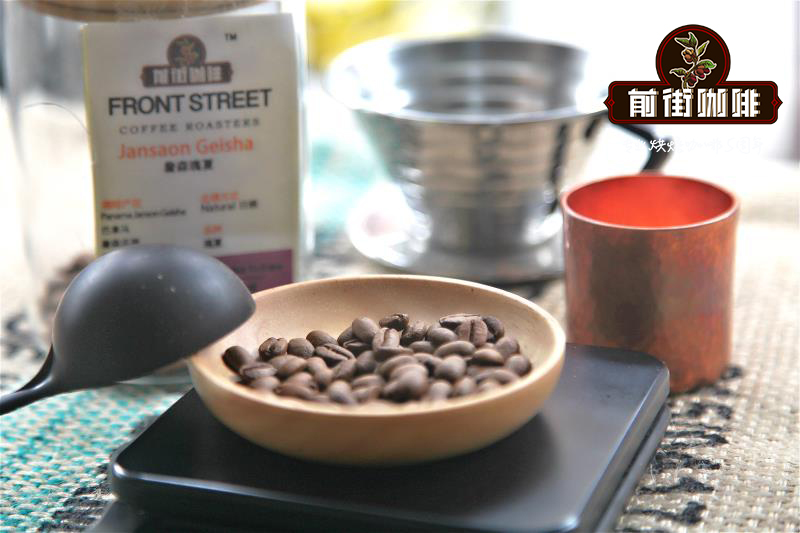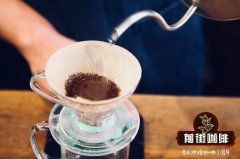What is the spread of coffee in Asia? what are the coffee producing countries in Asia?

Professional coffee knowledge exchange more coffee bean information please follow the coffee workshop (Wechat official account cafe_style)
Although Arabs ban the export of coffee seeds, they are indeed very open inside. The first coffee shops known as "Kavin Kahn" opened in Mecca, and for the first time in human history, anyone who spent a cup of coffee could go in and sit in a comfortable environment to do business and date.
Coffee enters Asia
The Arabs failed to spread coffee in Asia, but the Dutch did! In the process of colonization, they grew coffee in Malaba, India, and brought it to Batavia in what is now Java, Indonesia, in 1699. The Dutch colonies once became the main supplier of coffee in Europe. At present, Indonesia is the fourth largest coffee exporter in the world.
Coffee enters Europe Venice merchants first brought coffee to Europe in 1615.
Coffee enters China
According to historical records, coffee was first planted in Taiwan in 1884, which opened the prelude to the development of coffee in China. The earliest coffee cultivation in the mainland began in Yunnan, when a French missionary brought the first coffee seedlings to Binchuan County in Yunnan Province at the beginning of the 20th century. In the following nearly a hundred years, coffee was only "dotted" in the vast territory of China.
Yunnan area (China Yunnan):
Yunnan is the most famous coffee grower in mainland China, and it has been exported to foreign countries. Yunnan coffee originated in 1892 and was grown in the valleys of Binchuan County by a French missionary. Up to now, there are still dozens of old coffee trees in Zhukula Township of Binchuan County, which are as old as 90 years old, still blossom and bear fruit.
Nowadays, Yunnan coffee is washed with water, and the planting areas are gradually expanded, including Dehong, Xishuangbanna, Simao, Yuxi and Baoshan. The output has also increased significantly, which is gradually attracting the attention of the international market. Among them, Simao area mainly grows "Arabica species" and "Carimor", and most of its products are sold back to Nestl é; Lujiangba in Baoshan mainly grows "Tiebika species" and "bourbon species" with mellow taste, which can be a selection of coffee.
Taiwan (China Taiwan):
As a matter of fact, the cultivation of coffee in Taiwan has a long history. Both the British and the Japanese once planted coffee trees in Taiwan. By 1942, the area of coffee on the island had reached more than 1000 hectares, the largest period. Later, the Pacific War broke out. Agriculture is mainly food cultivation, and coffee plantations are mostly converted. By 1953, there were only 4.9hectares left. After that, it declined because of many political and economic factors, and it was not until recently that some people began to reinvest in it because of the coffee boom.
Hebao Mountain in Yunlin Gukeng, Huisun Forest Farm in Nantou, and Dongshan Township in Tainan County are currently several famous coffee producing areas in Taiwan Province, and most of them are planted in Arabica. Taiwan coffee is moderate in texture, low in acidity and with a hint of herbal flavor, similar to the synthesis of South American and Indonesian beans. At present, the output of coffee in Taiwan is not high, but because of the popularity of coffee fever in Taiwan, many people want to have a kiss, so the price remains high, even impersonating imports.
Let's take a look at the rest of Asia.
Indonesia (Indonesia):
Famous representative coffee: Java (Java), Sumatra Manning (Sumatra Mandheling)
Indonesia produces coffee beans mainly in Java, Sumatra, Sulawesi and other three islands, all of which belong to volcanic topography.
It is generally believed that Indonesian coffee beans have a strong aroma and low acidity, with a slight taste of traditional Chinese medicine and soil. Mandheling, produced in the mountains of Sumatra, is world-famous and rich in texture. Top Mantenin, light baked taste is very clean, sour and sweet taste are very rich; deep baking will have a very deep texture and strong taste.
Robusta beans from Java have a unique smell and are often used as a recipe for espresso because they are rich in oil. The coffee produced by Sulawesi is rated as having a special herbal flavor, deep and clean.
In particular, there is a special animal called the civet in the mountains of Indonesia. Because it makes Indonesia produce almost the most expensive coffee in the world-civet coffee (Kopi Luwak), Kopi (Indonesian, coffee), Luwak is a common name for civet in Indonesia. This kind of cat likes to eat coffee berries, and hard coffee beans are eventually excreted because they are indigestible. During the period of passing through the digestive tract, coffee beans are fermented to produce a unique and complex flavor, which makes many gluttons like this kind of coffee with special aroma. But because the output is very small, the price is extremely high, costing as high as hundreds of dollars per pound.
India (India)
Famous representative coffee: monsoon Malaba (Monsooned Malabar)
The taste of Indian coffee is very mild, very low in intensity and acidity, with some spice and, of course, the common local flavor of Asian beans. India is usually used to blend into Espresso recipes. In fact, Indian beans taste like Sulawesi beans or Sumatra beans, but not that thick. Indian coffee does not sell well in the international market, and the main markets are in India. Indian beans treated in the sun are called Cherry, Arabica beans washed in water are called Plantation Arabica, and Robusta in water are called Parchment Robusta. In addition, rainy beans and aged beans increase the consistency of coffee and dark chocolate-flavored aged beans.
Indian coffee is grown mainly in the areas from the Western Gaozhi Mountains in southern India to the Arabian Sea, with coffee sold under the names of Maiso and Malaba. Monsoon Malaba is a unique kind of coffee in India. Because of the coffee beans exported from the coast of Malaba to Europe at that time, the appearance and taste of the raw beans were changed after being hit by the sea breeze for a long time. And become a taste that Europeans are accustomed to and like. This later became a special method of handling coffee beans. After the coffee beans were harvested, they were especially placed in the wet monsoon for a few months, so that they turned yellow and white and reduced acidity, that is, the monsoon Monsooned Malabar we bought.
Vietnam (Vietnam):
Vietnam is also one of the top coffee producers in the world. At present, the vast majority of coffee trees in Vietnam are Robusta, because the Arabica coffee trees in Vietnam were destroyed by leaf rust in the mid-19th century and replaced with Robusta coffee trees that are resistant to leaf rust.
Robusta coffee beans have a unique aroma and bitter taste, and their caffeine content is higher than that of Arabica. Because of the high extraction ratio, it is often used to make instant coffee, canned coffee, or mixed with three-in-one coffee and so on.
In recent years, India has also begun to plant coffee trees in Arabica, more committed to the cause of coffee production, but there has been no development in the boutique coffee market. The Vietnamese coffee we often hear in our conversation sometimes refers to the cooking of ice droplets, which is different from the kinds of coffee beans mentioned here, so don't be confused.
Yemeni region (Yemen):
Well-known representative coffee: Mocha
Yemen is the first country in the world to grow coffee on a large scale. Its production is concentrated on the east coast of the Red Sea, across the sea from Ethiopia, where it originated. Ancient Yemeni coffee is exported from the port of Mocha, so it is collectively known as "mocha coffee" and is famous to this day. Some people call Ethiopia's "Harrar" and "Djimmah" as "mocha coffee", which can be said to be under their name.
END
Important Notice :
前街咖啡 FrontStreet Coffee has moved to new addredd:
FrontStreet Coffee Address: 315,Donghua East Road,GuangZhou
Tel:020 38364473
- Prev

Which country in Africa has the best coffee? how to drink the coffee brought back by Africa?
Professional coffee knowledge exchange more coffee bean information please follow the coffee workshop (Wechat official account cafe_style) Ethiopia global market share: 5% treatment: washing and tanning season: October-December output (2012): 8 million bags main varieties: Arabica, Ethiopia original varieties global production ranking: Ethiopia, the world's fifth largest coffee producer
- Next

How many coffee and bean producing countries in Asia | what are the characteristics of Asian coffee? what are the different flavors?
Professional coffee knowledge exchange more coffee bean information please follow Coffee Workshop (Wechat official account cafe_style) Yunnan China the main coffee producing areas in mainland China is Yunnan Province, first grown in Binchuan, and then extended to the southwest of Dehong Prefecture, several major cities such as Baoshan, Mangshi, Tengchong and so on can be seen in Yunnan coffee. Due to its unique geography
Related
- Beginners will see the "Coffee pull flower" guide!
- What is the difference between ice blog purified milk and ordinary milk coffee?
- Why is the Philippines the largest producer of crops in Liberia?
- For coffee extraction, should the fine powder be retained?
- How does extracted espresso fill pressed powder? How much strength does it take to press the powder?
- How to make jasmine cold extract coffee? Is the jasmine + latte good?
- Will this little toy really make the coffee taste better? How does Lily Drip affect coffee extraction?
- Will the action of slapping the filter cup also affect coffee extraction?
- What's the difference between powder-to-water ratio and powder-to-liquid ratio?
- What is the Ethiopian local species? What does it have to do with Heirloom native species?

